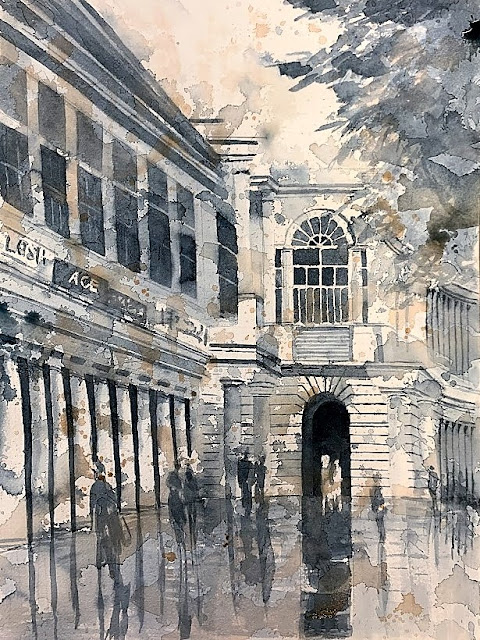High and low
The next assignment in the class was to create two value studies - one high-key and one low-key. It is one thing to know the difference (theoretical knowledge - I have a lot of that!) and another to be able to practice it. My photo, below, was low-key, so the value study was easy to do. Just copy the values - and exaggerate them a little to heighten the drama. Once I was done with the low-key value study in Payne's Gray, making it into a high-key was not so easy! It seems obvious now, but after reading Page 90 of "Powerful Watercolor Landscapes" by Catherine Gill, which I own, I understood that because the largest shapes take up the largest area, changing the values of those shapes alters the key of the scene.
I did a high-key study (not posted here) but it seemed like a washed-out version of the low-key. Although I didn't deliberately do it, I took each field and made its value a little lighter and there was my high-key study! It looked washed out, and worse, had no darks because it had simply been bleached. And it was not creative in the sense that I didn't reassign values to the areas - just copied the photo in a bleached way.
So, I went to thumbnail graphite sketches and worked it out. The background and shirt were good places to start - they became white/light, as they took up a fair bit of area. Catherine's advice worked very well.
Here are the sketches, the two value studies and the reference photo. I love it when disciplines overlap naturally - like using trace to create multiple value patterns from the same sketch (top left) - tracing paper is my relic from being in an architectural studio. I still use it, and not just for architecture.
resource photo cropped photo








Comments
Post a Comment